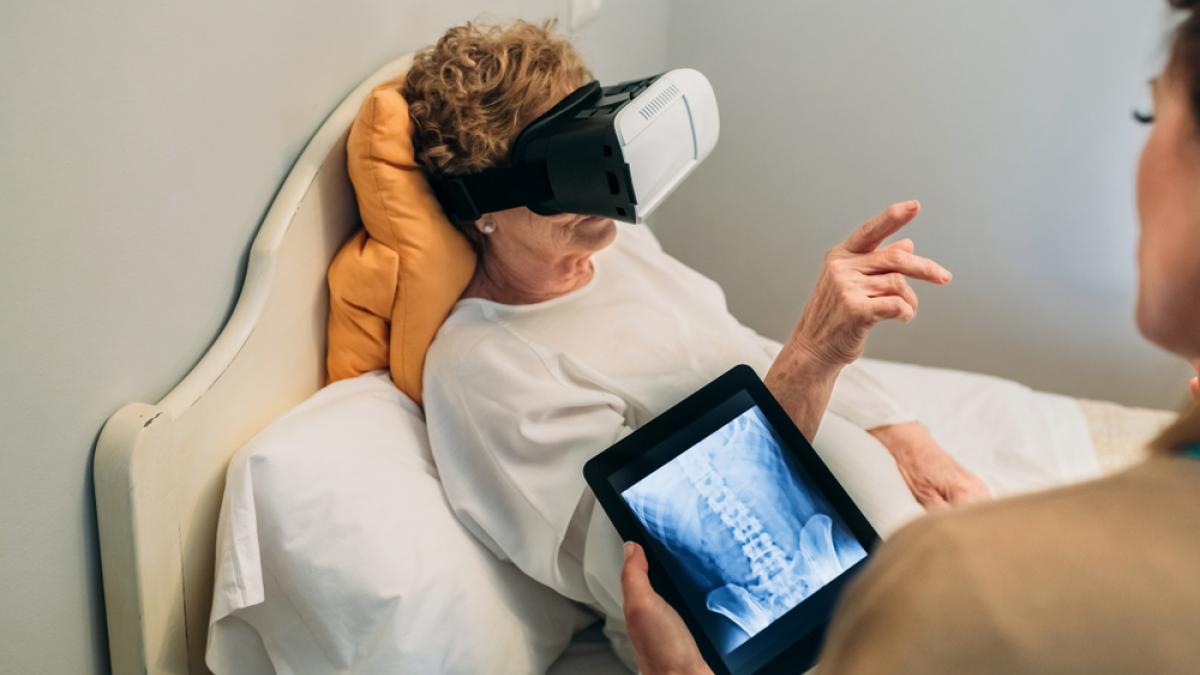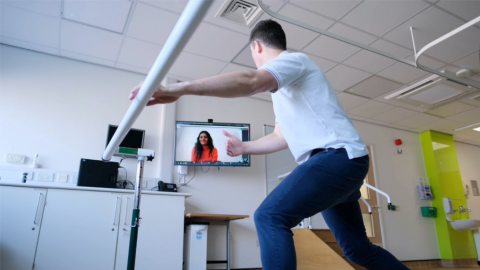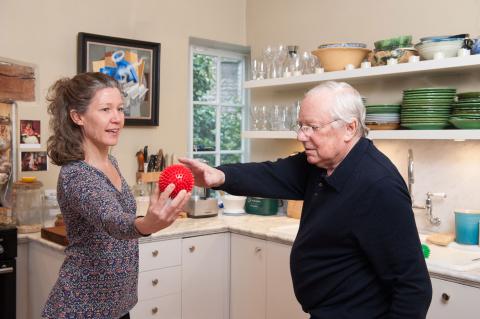Technology that creates virtual environments is set to change the way physios work and learn

What is virtual reality?
Virtual reality (VR) is an artificial environment that the user experiences as if they were really there. A number of technologies are used to achieve this.
VR can be used for both entertainment and more serious applications, and there are many opportunities for innovation. It has the potential to fundamentally change how we communicate and work.
VR systems can be immersive or non-immersive. In immersive VR, the user can explore and interact with a 3D, computer-generated environment. They become part of this virtual world and are able to manipulate objects or perform a series of actions. Immersive VR uses movement-sensing head-mounted displays, with or without additional hand controls.
Non-immersive systems use a visual display such as a flat-screen projector, television, curved screen or walled projection room. The user can interact with the system using a hand-held controller, for example, or through sensors and/or cameras that detect and display their movement.
Augmented reality
Augmented reality (AR) superimposes a computer-generated image on to the real world. It enables students to view and interact with 3D models, such as getting up close and personal with a beating heart. This content boosts engagement, understanding and ultimately knowledge retention.
Headsets include a front-facing camera and ARC (augmented reality classroom) app, which can be launched with a simple thumbs-up gesture. When students look at the ARC trigger images on worksheets or posters, the content comes to life, delivering interactive 3D models, such as machines, historical artefacts, planets, blood cells and many other exciting educational resources.
Mixed reality
Mixed reality blends virtual objects with real-world views, enabling students to interact physically with a huge range of 3D models. They can hold a human heart in their hands, get close to a black widow spider or step inside a medieval house.
Why is virtual reality important?
These advances are important for several reasons:
- Education and training.
- Virtual clinics.
- Patient motivation, with personalised rehabilitation.
- Careers promotion and recruitment.
- Lifelong learning – CPD, virtual lectures, virtual conferences.
- Assessing decision-making – simulations provide high-quality, flexible, evidence-based and cost-effective alternatives to traditional teaching methods. Using VR headsets or mobile devices, users are immersed in realistic environments, and their decision-making ability when managing patients can be assessed as it would be in real life.
What can virtual reality do for physiotherapy?
Rehabilitation
In patient-facing rehabilitation, VR is incorporated into games that enable participants to practise movements or develop skills in an environment that is safe but also engaging and challenging. For instance, in stroke rehabilitation, VR is being used to radically increase the amount of movements undertaken in a treatment session, with predicted gains in function and overall outcome.
In these contexts, VR doesn’t need to be custom-made or expensive. Commercial systems such as Microsoft Kinect – which can sense and represent movement without requiring the user to hold a controller or wear markers – provide an engaging and fun experience. Some patients can use the ‘training’ games available for these systems. However, they are not suitable for all, so games and content do need to be considered for each individual.
Outside physical rehabilitation settings, VR is being used to mimic social systems for people with communication problems and to help veterans with post-traumatic stress disorder and/or generalised anxiety.
Soft skills training
Typically, we learn soft skills through experience, but VR, AR and artificial intelligence can be used to improve learning. These approaches can lower costs, save time and be used anywhere.
Examples of virtual reality
The Brain and Spinal Injury Centre (BASIC) is a neurological rehabilitation centre that has a purpose-built virtual reality suite. This enables patients to move, walk and use their arms in engaging and immersive environments to complete tasks and play games. An evaluation of one device for the upper limb revealed that patients enjoyed the challenge of playing games to improve recovery.
Health Education England has produced four immersive 360-degree VR films that demonstrate roles in different healthcare professions.
Systematic reviews of virtual reality
Some of the systematic reviews summarising the existing evidence relating to VR in rehabilitation are described below:
- Ravi et al (2017) reviewed the effectiveness of virtual reality therapy (VRT) for children and adolescents with cerebral palsy. They found moderate evidence that VRT improves balance and motor skills. Evidence was weak for improvements in joints, upper extremity skills, gait, strength and sitting ability. The findings were not sufficient to recommend VRT for clinical practice.
- Juras et al (2018) reviewed balance training for neurological patients (adults and children) using virtual reality versus conventional rehabilitation and/or no intervention. They found results were significantly better when virtual reality was used.
- Ravi et al (2017) and Juras et al (2018) demonstrate that future research should include well-designed multi-centre randomised controlled trials with high-quality, large sample sizes and follow-up. Their results should be interpreted with great caution because the studies reviewed included a large diversity of systems and games, and the training volume varied. Only a few articles included objective methods to assess the effects of VRT and most showed a high risk of bias.
- Cochrane reviews undertaken by Dockx et al 2016 and Laver et al 2017 investigated use of VR in rehabilitation for Parkinson’s disease and stroke. They found the effectiveness of interventions using VR was similar to conventional therapies, but with some additional benefits. These included: accurate feedback; ability to stimulate users by creating personalised, motivational and fun interventions; and the potential for virtual reality to be used as a supervised therapy that can be taken home, although further evidence is required.
Finally, MIRA Rehab has developed ‘exergaming’ software that uses non-immersive virtual reality to help prevent falls in older people.
Authors:
- MC Wadley
- Marilyn Bradbury
- Rachel Stockley
Edited by Daniel Allen







































